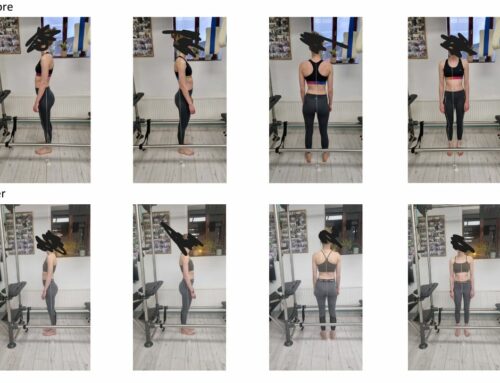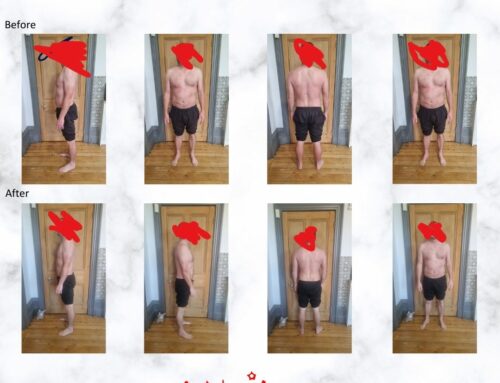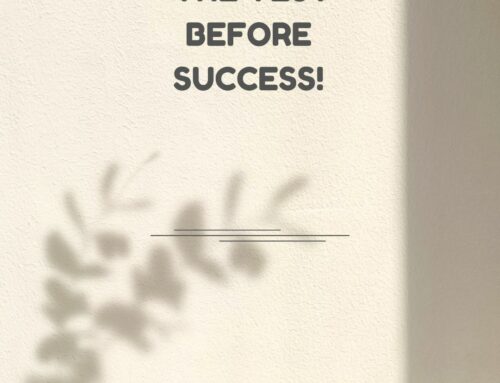You may of seen me wearing these mad chicken type shoes in class. They are vibram five fingers . I have not seen many people wearing them. We are all sold trainers constantly by the media. We are shown the benefits of wearing so many of these shock absorbing shoes, usually sponsored medical papers by big sports companies. However did you know that it’s actually better to start to train your body to work barefeet. Now I am not saying go straight to these shoes in training situations as its takes time to adjust. Most of us would benefit even form walking around the house in them and definitely for the gym.
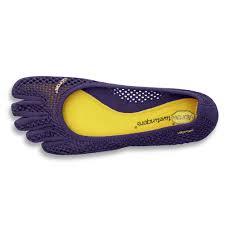 Many modern shoes are not a natural foot shape, they are too narrow and cause damage to the feet. When feet are given plenty of room to flex and splay, they gain the chance to re-align and re-strengthen. Various brands of fivefinger shoes are designed to allow your feet to have this space, even when you’re wearing shoes. Having an Indian background makes it so much easier to be barefoot as we never have shoes in the house, they are always left at the front door. A tradition i’ve followed through into my house and my Pilates/Yoga studios.
Many modern shoes are not a natural foot shape, they are too narrow and cause damage to the feet. When feet are given plenty of room to flex and splay, they gain the chance to re-align and re-strengthen. Various brands of fivefinger shoes are designed to allow your feet to have this space, even when you’re wearing shoes. Having an Indian background makes it so much easier to be barefoot as we never have shoes in the house, they are always left at the front door. A tradition i’ve followed through into my house and my Pilates/Yoga studios.
Indian culture of bare feet
In traditional Indian Hindu society, going barefoot is of prime importance. One way both rulers and ordinary folk pay respect to the temple deities is by approaching barefoot, a sign of respect, humility and submissiveness.
Going barefoot also signifies respect for the earth upon which people walk. The foot is the body part that touches the earth – the sacred mother of all. The earth is imbued with generative powers and the foot is thought of as the conduit through which the vital energy of the earth travels through humans unto the cosmos. These beliefs point to the foot being held in high esteem in Indian culture.

The feet of elders are worshipped by the younger generation; the feet of religious teachers and holy men by their followers; the feet of idols by their devotees, the feet of innocent persons by wrongdoers seeking forgiveness, and the feet of babies massaged by mothers to ensure a healthy, strong and energetic child.
Foot Care in India
For the above reasons, foot care is taken seriously in India, as in many other Asian cultures such as Thailand. People traditionally kept their feet as clean and well-cared for as their hands. Bathing houses exist for those who do not possess the means for bathing and after-bath toiletry at home.
Going barefoot works by reawakening a light, natural stride in the body, through the feedback we get from our feet touching the ground. There’s less impact and joint torque than in a shoe, it reawakens muscles that have atrophied in our shoes, reawakens nerve endings and our balance system, stimulates reflexology points on the bottom of our feet, and even has anti-inflammatory benefits through grounding. This all means a stronger body, less joint pain, better posture, more mobility, greater health, and greater freedom.
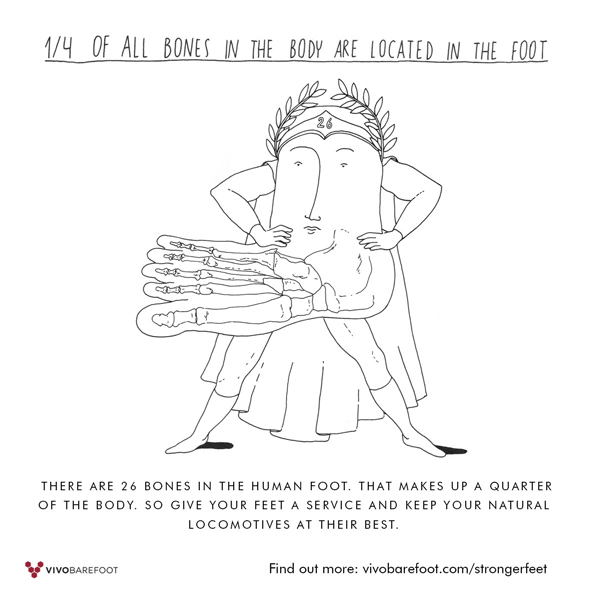
Going barefoot is like discovering a new fountain of youth. When our feet, knees, hips and backs are no longer in pain, we’re more likely to be active again. You’ll feel younger, your body will act as if you’re younger, and you’ll be stronger and more active than you’ve been in many years. Your mind will become sharper and your concentration better focused.
Imagine confining 2,00,000 nerve endings, 26 bones (one fourth of all the bones in the body), 33 joints, over a 100 muscles, tendons and ligaments, and 2,50,000 sweat glands within a tight wrap or upon an uncomfortable platform for hours together. Well, that is exactly what we do when we put on our shoes or sandals!
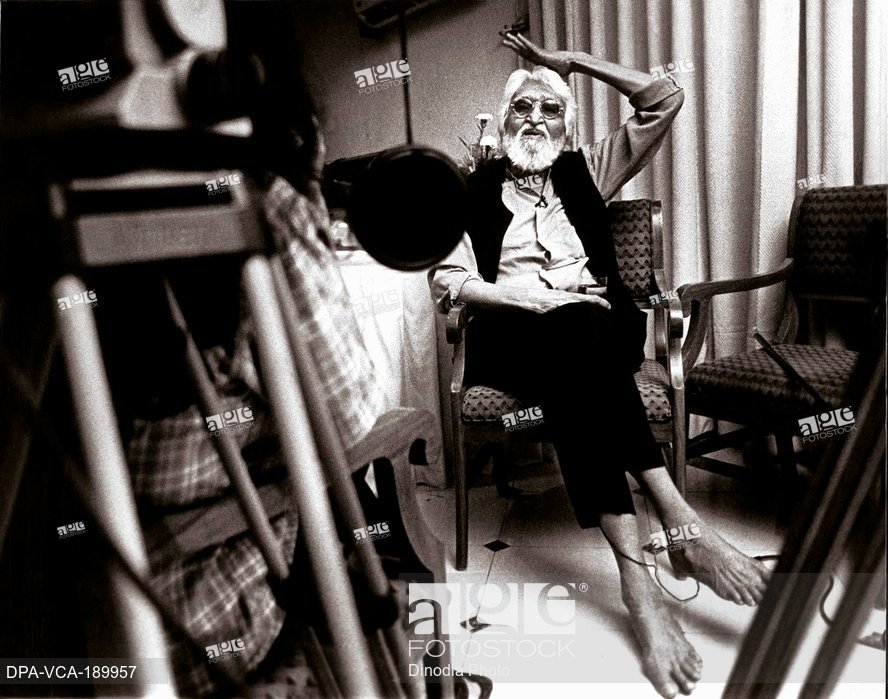
M F Hussain giving interview with signature bare feet India Asia
Thankfully, this awareness is catching on, and barefoot walking — like many other lifestyle aspects we abandoned over the years — is making a comeback as a health funda. In fact, there are networks of people in the West, such as the The Barefoot Alliance and The Society for Barefoot Living, who walk barefoot wherever they go — to sleek offices, swanky malls, up-market restaurants and glitzy stadiums. Why, champion Olympian runners such as Abebe Bikila and Zola Budd have taken to barefoot running!
So what should I train in bare feet or trainers?
The main thing is that the strike of the foot strike is different. Bare feet you will tend to land ball – heel, as I did at dance college. With the trainer there is more heel ball. 1There are notable differences in gait and other parameters between barefoot running and shoe running. Based on these findings and much anecdotal evidence, one could conclude that barefoot runners should have fewer injuries, better performance, or both. Several athletic shoe companies have designed running shoes that attempt to mimic the barefoot condition, and thus garner the purported benefits of barefoot running.
Alot of warmer countries like New Zealand and parts of Asia are all bare feet. This medical paper shows how the foot strike differs between the fore-foot and rear-foot with the different shoes. 2.Here we show that habitually barefoot endurance runners often land on the fore-foot (fore-foot strike) before bringing down the heel, but they sometimes land with a flat foot (mid-foot strike) or, less often, on the heel (rear-foot strike). In contrast, habitually shod runners mostly rear-foot strike, facilitated by the elevated and cushioned heel of the modern running shoe. Kinematic and kinetic analyses show that even on hard surfaces, barefoot runners who fore-foot strike generate smaller collision forces than shod rear-foot strikers. This difference results primarily from a more plantarflexed foot at landing and more ankle compliance during impact, decreasing the effective mass of the body that collides with the ground. Fore-foot- and mid-foot-strike gaits were probably more common when humans ran barefoot or in minimal shoes, and may protect the feet and lower limbs from some of the impact-related injuries now experienced by a high percentage of runners.
While our feet are designed to best aid our body’s movement and weight distribution, our footwear has largely evolved around cosmetic reasons and are categorised around a handful of sizes, though each foot has its own shape and strength. “Our feet arches are basically shock absorbers and disperse weight in such a way that they avoid injury to ankle, knee and other parts of the body. Barefoot walking preserves the mechanics of the feet, while footwear impedes this. While staying barefoot is best, wearing sandals or slippers are better than closed-toe shoes. Thinner soles are better, and heels are definitely injurious,” says A.B. Govindaraj, chief consultant orthopaedic and joint replacement surgeon, Fortis Malar.
Causing instability
“With heels in the footwear, the foot’s actual heel is automatically pushed up and the body is pushed forward, so the hip tilts back, the spine’s arch deepens, shoulders are thrown back and the knees are bent to create stability. This is not good for the heel, ankle, knee or hip joints,” explains Rajeev K. Sharma, senior consultant orthopaedic and joint replacement surgeon, Apollo Hospital, New Delhi.
“Foot arches are not present at birth and develop in infancy and early childhood. Giving the growing child’s feet free space to grow and allowing contact with varying terrain facilitates the formation of foot arches and feet strength,” says Dr. Sharma. This is why the American Podiatric Medical Association recommends that kids be barefoot as long as possible.
In so many Indian households now children are wearing slippers and shoes (chapel). Are we loosing the ability to connect to the self?
Obviously, walking barefoot is not possible in a country such as ours where broken glass and other debris are strewn around. But, we can avoid wearing footwear when we don’t need to — such as at gyms, homes, private gardens, clear stretches of beach sands, while driving the car, etc.
The barefoot advantage
– Less risk of injury to ankles, heel, knee and hip joints.
– Better strength and functioning of feet and leg muscles.
– Better posture, stride and spinal alignment.
– Less strain on hamstrings, shoulder, neck and hip muscles, which are otherwise strained to accommodate the forward tilt of the footwear heel.
– Less chance of conditions such as the stretching of the sole (plantar fasciitis), hammer toes, bunions (growth on the side of big toe), foot corns, sweating and nail fungus (especially in diabetics), ingrown nails, athlete’s foot etc.
– Healthy stimulation for the nerve endings on the bottom of the feet
– May improve proprioception (feedback to the brain) and improve sense of balance in the brain.
– Tip-toe exercises or just standing on bare toe-tips improves circulation of blood in feet and legs, and prevents varicose veins.
Bibliography
Paul Chek blogs
- NCBI Barefoot v shoe running forma pst to present
- NCBI Foot stoke patterns and collision forces in habitually barefoot versus shod runners.


